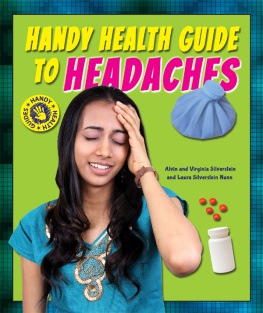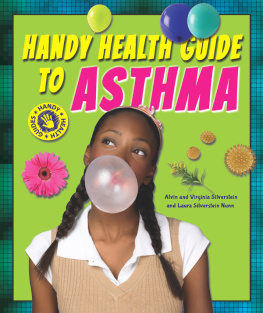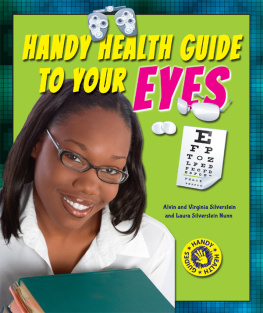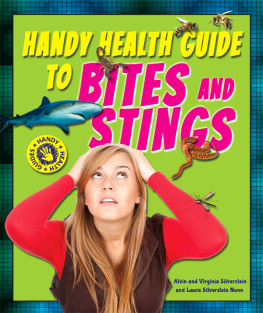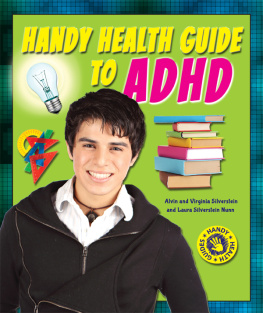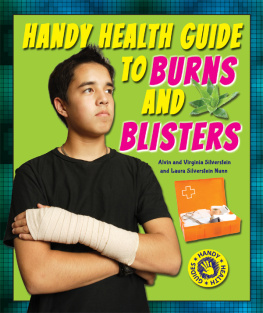OH, MY ACHING HEAD!
We all face health problems once in a while. Maybe you have come down with the flu or you have a migraine headache. Perhaps you have asthma or a cavity. Some people need glasses to see better or are allergic to bee stings. These handy guides teach you about your health and how all the parts of your body work together to keep you healthy most of the time.
About the Author
Dr. Alvin Silverstein is a retired professor of biology at the College of Staten Island, City University of New York. Virginia Silverstein translates scientific Russian and is a professional author. Together they have written more than 200 books for young people. Laura Silverstein Nunn has coauthored more than 100 books with her parents.

Image Credit: Shutterstock.com
Do you ever have a bad headache?
What a busy day at school! You survived a pop quiz and an exhausting gym class, but then you almost missed the bus! When you get home, you plop down on the cushy sofa, press your hands to your head, and moan, Oh, my head hurts! You have a headache.
A headache is a sign that something is wrong in your body. Many things can cause headachesa tough day at school, certain foods, or the flashing special effects on a TV show. You can even get a headache when youre hungry, or when you dont get enough sleep. Many common illnesses, such as colds and flu, can also cause headaches.
Not all headaches are the same. Most are just an annoying dull ache that makes it hard to think. But some are really bad. They make you feel like your head is going to explode. The pain may be constant, or it may be throbbinglike a heartbeat.
Headaches can be a real pain, but most are not serious. Sometimes, though, headaches can hurt so much or happen so often that you need to see a doctor. A doctor can help you find out what is causing the headaches. Once you know what the problem is, you can find ways to treat the headaches or get rid of them completely.

Most people get a headache once in a while. As many as 75 percent of teens have had at least one bad headache by the time they are 15 years old.

Image Credit: Artisticco LLC/Photos.com
Headaches are among the most common health problems in the United States. Millions of adults, teens, and kids suffer from headaches. Even young children quickly learn to identify the pain of a hurting head.
When you have a headache, the pain seems to be coming from inside your head. At first you might think your brain is hurt, but that isnt really true. Your brain is the control center for all your thoughts, feelings, and body movements. Information about the world travels from your eyes, ears, nose, mouth, and skin to your brain. These messages are carried by nerves.
When you get hurt, nerves carry pain messages to your brain. But your brain itself does not have nerve endings that can sense pain. If your brain were damaged, you wouldnt feel any pain. In fact, a doctor can operate on a persons brain while he or she is awake!

Image Credit: Alexander Shirokov/Photos.com
Nerve cells, such as the ones shown here, carry messages to the brain, where they are turned into something we can understandlike pain.
So what is it thats hurting when you have a headache? Most of the time, the pain comes from outside the skull, from the nerves, blood vessels, and muscles that cover your head, neck, and scalp. Blood vessels in and around your brain can hurt you too. They may swell up and put pressure on nearby nerves. Nerves in your face, mouth, or throat may also be responsible. When any of these nerves sends pain messages to your brain, you get a headache.
Most people get headaches every once in a while. Some people get headaches more often. They may get a headache several times a weekor even every day. A headache may last for a few minutes, a few hours, or a few days.
Headache pain may be rather mild or really annoying. A bad headache can make you want to just curl up and go to sleep, but sometimes headaches hurt so much that you cant sleep.

Image Credit: Shutterstock.com
You may get a headache when the blood vessels in your head or neck (red) swell up and press on nearby nerves, sending pain messages to the brain.

Image Credit: Matthew Spindler/ Photos.com
Homework has really stressed this person out. Now he feels a headache pain in the back of his head.
There are two main kinds of headaches: tension headaches and migraine headaches. When you have a tension headache, you feel a dull pain that just wont let up. It feels like something is pressing on your head. The pain may be in the front or back of your head or on both sides. Sometimes a tension headache feels like a tight band around your head.
A migraine is a different kind of headache. The pain is sharp and throbbing. And it is usually in just one area. The name migraine comes from a Greek word meaning half a head, because the pain often occurs on just one side of the head. But some migraines make both sides of your head hurt, or the pain may spread from one side to the other. You may also be unusually sensitive to bright light, loud noises, or strong smells.
A migraine is sometimes called a sick headache because it can make you feel dizzy or sick to your stomach. You may even throw up.
Some headaches are a combination of both migraine and tension headaches. You may start with a migraine. Then, if the pain makes you tighten muscles in your head and neck, you may end up with a tension headache too. In some situations, a tension headache may also bring on a migraine.

Patients are usually not awake when they have surgery. Imagine how painful it would be if they were! But brain surgery is a different story. Some doctors actually want their patients to be awake during their operation. While poking around the patients brain, the doctor will talk to the patient and the patient will talk right back! That way if theres a change in the patients speech, such as slurring or trouble speaking, the doctor will stop before theres any damage.

Image Credit: Shutterstock.com

Tension headaches are more common than migraines. About 90 percent of the headaches people have are tension headaches.

